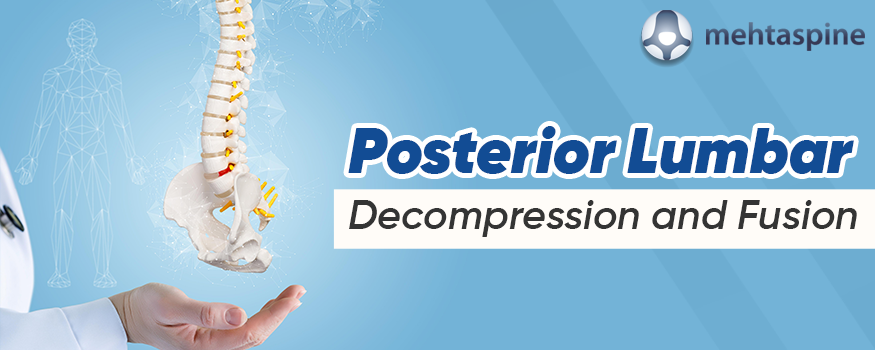Posterior Lumbar Decompression and Fusion (PLDF)
Posterior Lumbar Decompression and Fusion (PLDF) is a spinal surgery procedure performed to treat spinal conditions and problems of the lower back.
It is an advanced surgical procedure that uses cutting-edge surgical equipment with advanced imaging technology to minimize tissue disruption with smaller incisions and reduced pain, leading to quick recovery, & shorter hospital stays.
“Today’s Posterior Lumbar Decompression and Fusion has tremendously improved the scope of innovation in spine surgeries. They have expanded the usage of biological substances like bone grafts that accelerate the fusion and healing process, made the involvement of patient-specific implants and robotic systems possible, significantly improving the accuracy and efficiency of the surgical procedures,” says a spine surgery specialist in the UK, Mr. Jwalant S. Mehta. With his inputs, we have delved into these advanced spine surgery procedures in this blog, to improve awareness for patients aiming to know about this advanced spinal treatment.
Posterior Lumbar Decompression and Fusion (PLDF):
Decompression and fusion are two different procedures to relieve the pressure on the nerves and stabilize the spine, respectively. The term “posterior” indicates that the surgery is approached from the back of the body, and “lumbar” refers to the lower spine. Posterior lumbar decompression and fusion refer to the sequential decompression and spinal fusion procedures performed on the lower part of the spine to relieve pain caused by a variety of spinal conditions and abnormalities.
Lumbar Spine Decompression:
Spinal decompression is used to treat spinal conditions that involve compression or impingement of the spinal cord or its nerve roots. It is a type of procedure that is aimed at relieving the pressure on these spinal nerves and spinal cord by removing a portion of the bones, disc, or tissue that is responsible for putting the pressure. Spinal decompression has many names based on the specific type of procedure that is performed.
These procedures can be a laminectomy, where the bony arch of the vertebra is removed to create more space in the spinal canal, or foraminotomy, where the foramen is enlarged to relieve pressure on the nerve roots; or even discectomy, where a damaged or herniated disc is removed to get rid of nerve impingement in the lumbar spine.
Lumbar Spinal Fusion:
Lumbar spinal fusion is a surgical procedure that is performed to fuse two or more vertebrae. This fusion is created to make a solid bridge stabilizing the lower part of the spine to reduce pain and improve spinal stability in degenerative disc disease, spondylolisthesis, spinal fractures, spinal stenosis, or scoliosis.
The spinal fusion procedure involves making an incision in the lower back to access the lower spine. A bone graft is inserted between the vertebrae using surgical hardware like rods or screws to induce stability. Over time, the bone graft, along with the surgical hardware, fuses with adjacent vertebrae to create a solid bridge that improves stability in spinal conditions.
“The Posterior Lumbar Decompression and Fusion (PLDF) is recommended in cases where conservative treatments like physical therapy, medications, or injections fail to relieve chronic pain, weakness, or numbness induced by spinal conditions or spinal abnormalities. Rehab and recovery after the Posterior Lumbar Decompression and Fusion include restricted activity and physical therapy to gradually increase strength, gain mobility, and improve overall spine health”, says Children and Adult Spinal Surgeon Mr Jwalant S. Mehta.
While PLDF is an advanced procedure that provides relief from spinal conditions or spinal abnormalities, every case is unique. The appropriateness of this procedure is evaluated based on the benefits, risks, and alternative treatment procedures, along with the patient’s medical history and specific condition. If you are from UK, and are looking for more information about Posterior Lumbar Decompression and Fusion, you can contact Spine Surgery Specialist in UK Mr Jwalant S. Mehta


